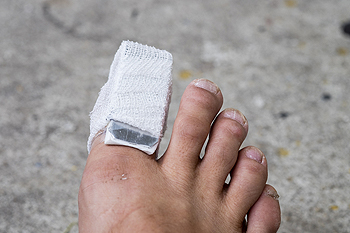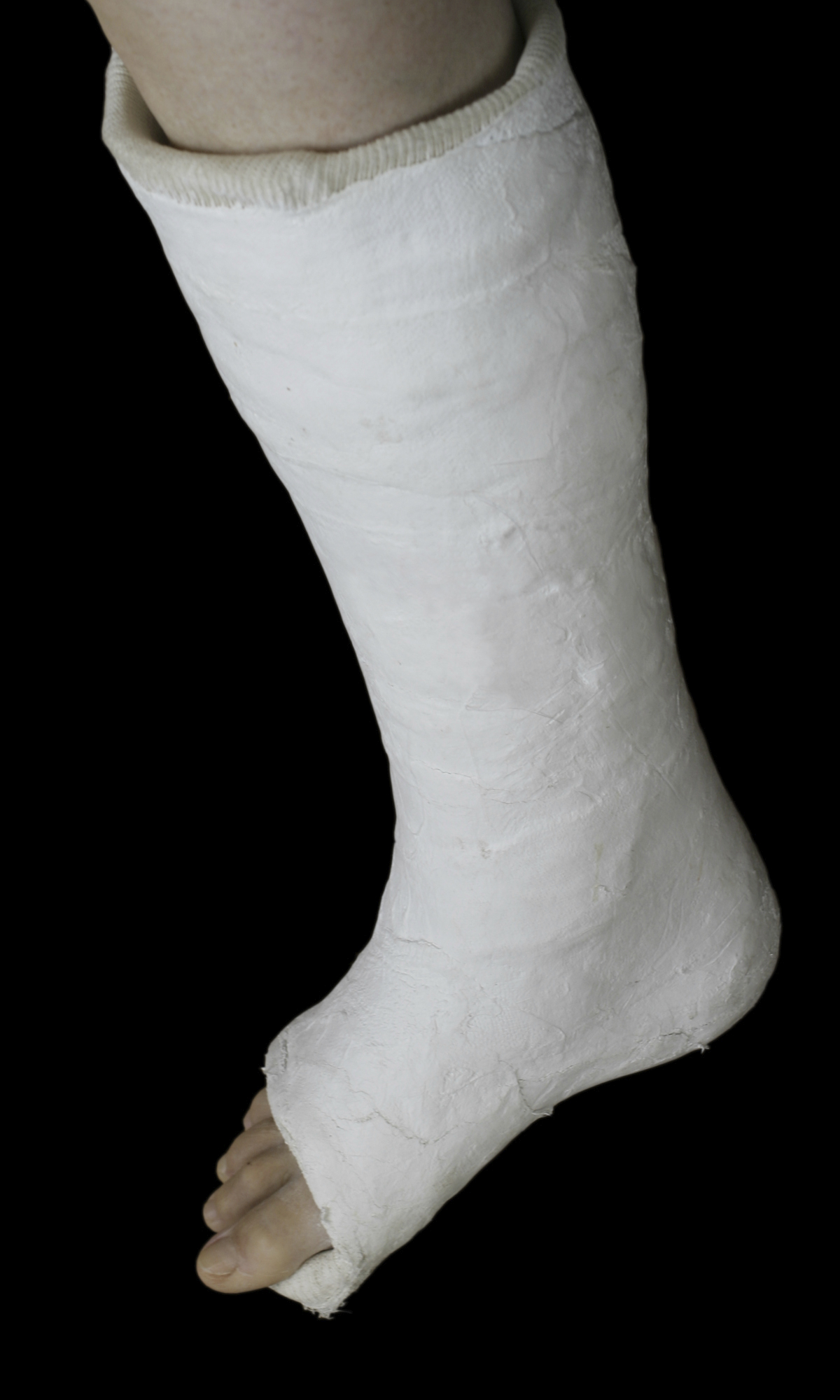 Noticeable symptoms of a broken toe include severe pain, swelling, and bruising. In severe fractures, the bone may protrude from the skin, which can cause it to appear deformed. This ailment can occur if the toe suddenly hits a piece of furniture, or if a heavy object is dropped on it. Some patients can develop a broken toe as a result of a stress fracture. This is caused by repetitive movements or from wearing shoes that do not fit correctly. After a proper diagnosis takes place, which typically includes having an X-ray taken, the toe can be taped to the toe next to it. This is referred to as buddy taping. This procedure is helpful in maintaining stability as the healing process occurs. If you feel you have broken your toe, please consult with a podiatrist who can properly treat this condition.
Noticeable symptoms of a broken toe include severe pain, swelling, and bruising. In severe fractures, the bone may protrude from the skin, which can cause it to appear deformed. This ailment can occur if the toe suddenly hits a piece of furniture, or if a heavy object is dropped on it. Some patients can develop a broken toe as a result of a stress fracture. This is caused by repetitive movements or from wearing shoes that do not fit correctly. After a proper diagnosis takes place, which typically includes having an X-ray taken, the toe can be taped to the toe next to it. This is referred to as buddy taping. This procedure is helpful in maintaining stability as the healing process occurs. If you feel you have broken your toe, please consult with a podiatrist who can properly treat this condition.
A broken toe can be very painful and lead to complications if not properly fixed. If you have any concerns about your feet, contact one of our podiatrists from Foot Health Center of Merrimack Valley. Our doctors will treat your foot and ankle needs.
What to Know About a Broken Toe
Although most people try to avoid foot trauma such as banging, stubbing, or dropping heavy objects on their feet, the unfortunate fact is that it is a common occurrence. Given the fact that toes are positioned in front of the feet, they typically sustain the brunt of such trauma. When trauma occurs to a toe, the result can be a painful break (fracture).
Symptoms of a Broken Toe
- Throbbing pain
- Swelling
- Bruising on the skin and toenail
- The inability to move the toe
- Toe appears crooked or disfigured
- Tingling or numbness in the toe
Generally, it is best to stay off of the injured toe with the affected foot elevated.
Severe toe fractures may be treated with a splint, cast, and in some cases, minor surgery. Due to its position and the pressure it endures with daily activity, future complications can occur if the big toe is not properly treated.
If you have any questions please feel free to contact one of our offices located in North Andover, and Tewksbury, MA . We offer the newest diagnostic and treatment technologies for all your foot and ankle needs.










